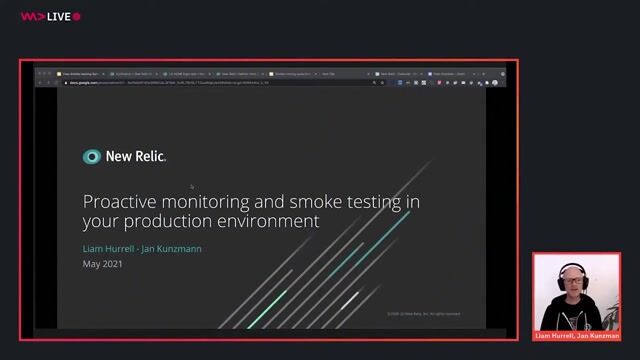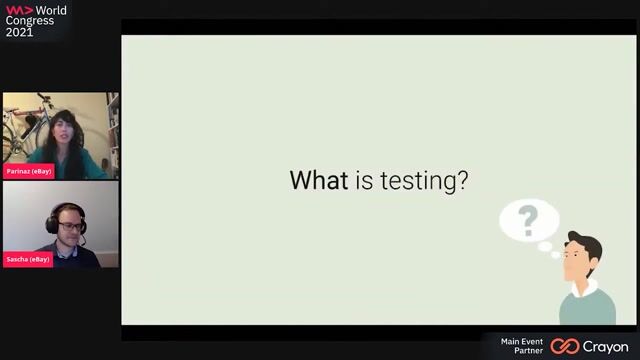Liam Hurrell & Jan Kunzmann
Implementing smoke testing and proactive monitoring in production
#1about 3 minutes
Defining smoke testing for critical functionality
Smoke testing provides rapid, cost-effective feedback on critical application functionality by running a wide but shallow set of end-to-end tests.
#2about 5 minutes
The importance of continuous testing in production
Running automated tests continuously against the production environment, not just staging, provides ultimate confidence in site reliability and protects core business workflows.
#3about 8 minutes
Implementing smoke tests in your deployment lifecycle
Integrate smoke tests to run immediately after deployments and at regular intervals using automated, cloud-based solutions for consistent feedback.
#4about 4 minutes
Identifying critical user flows for smoke testing
Focus tests on essential user journeys such as login, registration, adding items to a cart, and verifying both internal and third-party API endpoints.
#5about 4 minutes
Automating web tests with synthetic monitoring
Synthetic monitoring uses automated scripts from global locations to proactively test availability, functionality, and performance before users are impacted.
#6about 15 minutes
Creating availability and performance monitors
Set up basic ping monitors to check endpoint availability and simple browser monitors to capture detailed performance waterfalls for key pages.
#7about 17 minutes
Writing a scripted API test with Node.js
Use a Node.js environment to write custom scripts that make HTTP requests to API endpoints and assert that the responses are valid.
#8about 14 minutes
Simulating user journeys with scripted browser tests
Build end-to-end user simulations with Selenium-based scripts that navigate pages, find elements, and perform actions like clicking buttons.
#9about 6 minutes
Using no-code tools to create test scripts
Accelerate test creation by using a step-by-step builder in the UI or by recording user interactions with the Selenium IDE browser extension.
#10about 6 minutes
Visualizing test results with dashboards and reports
Use a query language like NRQL to build dashboards that track success rates and error types, and configure alert policies to get notified of failures.
Related jobs
Jobs that call for the skills explored in this talk.
Featured Partners
Related Videos
 1:27:59
1:27:59Proactive monitoring and smoke testing in your production environment
Liam Hurrel
 43:07
43:07How not to test
Golo Roden
 42:34
42:34How To Test A Ball of Mud
Ryan Latta
 47:22
47:22Continuous testing - run automated tests for every change!
Christian Kühn
 47:37
47:37Using non-functional testing to guide user interface, backend services, voice interface, and media development
Brien Colwell
 25:38
25:38Measure and improve frontend performance by using test automation
Ramona Schwering
 1:42:16
1:42:16Test Driven Development with JavaScript
Sascha Depold & Parinaz Roghany
 36:50
36:50Frontend Performance Testing in practice
Jonas Kröger
From learning to earning
Jobs that call for the skills explored in this talk.
Node.js/Playwright Engineer - Testdriver Development
TechBiz Global GmbH
Canton of Montpellier-3, France
Remote
REST
Docker
Node.js
JavaScript
+1
Node.js/Playwright Engineer - Testdriver Development
TechBiz Global GmbH
Paris, France
Remote
REST
Docker
Node.js
JavaScript
+1
Node.js/Playwright Engineer - Testdriver Development
TechBiz Global GmbH
Canton of Bordeaux-2, France
Remote
REST
Docker
Node.js
JavaScript
+1
Node.js/Playwright Engineer - Testdriver Development
TechBiz Global GmbH
Quedlinburg, Germany
Remote
REST
Docker
Node.js
JavaScript
+1
Node.js/Playwright Engineer - Testdriver Development
TechBiz Global GmbH
Schwerin, Germany
Remote
REST
Docker
Node.js
JavaScript
+1
Node.js/Playwright Engineer - Testdriver Development
TechBiz Global GmbH
Greifswald, Germany
Remote
REST
Docker
Node.js
JavaScript
+1
Node.js/Playwright Engineer - Testdriver Development
TechBiz Global GmbH
Rostock, Germany
Remote
REST
Docker
Node.js
JavaScript
+1
Node.js/Playwright Engineer - Testdriver Development
TechBiz Global GmbH
Neuruppin, Germany
Remote
REST
Docker
Node.js
JavaScript
+1

